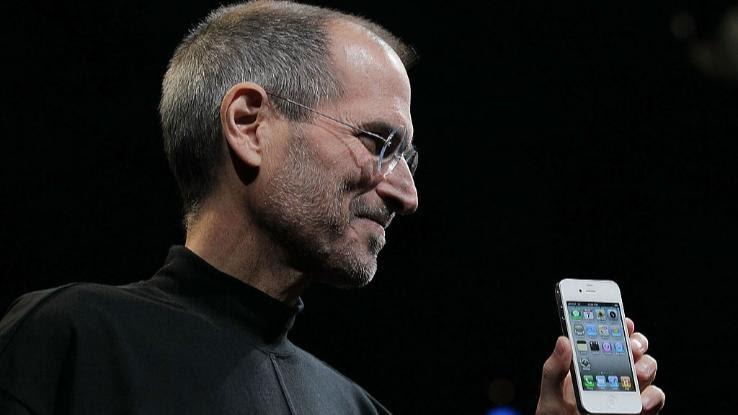What Is The Main Challenge Of Product-oriented Business Compared To Service-oriented Business?

Product orientation is a business strategy that focuses on developing and designing high-quality products that generate need. In other words, a product-oriented business concern has an "if you lot build information technology well, sales will come" type of mentality.
On the opposite side of the coin is a strategy called market orientation. The biggest deviation is that product-oriented companies build products that they believe are potent plenty to inspire public interest, while market-oriented companies build products designed to cater to public interests that already exist. Learn more than about product orientation by reviewing definitions and examples of companies that utilize this strategy.
Product-Oriented Activities
Upwardly until the mid-20th century, production orientation was fairly standard but because consumers didn't have too many choices when it came to certain products. One famous example of this sentiment comes from an early 1900s Henry Ford declaration: "Any customer can have a machine painted any color that he wants then long as it is black."

Every bit the marketplace continued to evolve, however, business strategies were forced to grow along with consumer demands. As lack of competition has become rarer in almost industries, many successful businesses now use a combination of market- and production-oriented approaches. While it's nevertheless mutual for some companies to lean more heavily towards one side or the other, few tend to use either exclusively.
Regardless, production orientation still plays an important role in most companies' marketplace strategies. During the product orientation stage of developing appurtenances, at that place'due south a large focus on production inquiry, production development and production focus.
Production Inquiry
If yous're looking to open a business or launch a new product, product inquiry plays an of import role and gauges your odds of success. Production inquiry tin can include a variety of activities, such as evaluating and testing product concepts, evaluating how much competition you'll have, figuring out potential costs to make the production and pricing the product in a way that yous'll be able to generate a profit.
Product Development
If a concern is heavily focused on product orientation, and so this is a large part of the process. Though many dissimilar activities are involved in this stage, the focus is on making the strongest possible process to ensure demand. Evolution typically involves creating and designing a new product or figuring out updates to an existing i. It tin can likewise include edifice and testing said product and subsequently producing, marketing and distributing it, likewise.
Product Focus
Product focus involves mapping out things similar selling strategy, manufacturing and metrics. Past focusing on the product, companies aim to continually improve their offerings to stay competitive in their manufacture.
Product Orientation Examples
While nosotros mentioned that many companies apply a mixture of market orientation and product orientation, there are some that lean more towards the product orientation bending. These companies tend to exist innovators that arrive on the scene with hot new products that consumers had no idea they wanted. Some examples include:

Apple
Before Steve Jobs and the Apple team shot to the level of tech stardom the company possesses today, no one had really envisioned the iPod, iPhone, iPad — iAnything. Yet by developing these and other revolutionary new products, Jobs and his team were able to cash in by offer products that they correctly predicted would create a cracking deal of demand.
Netflix
Netflix's production is technically more than of a service, merely by providing customers with piece of cake access to the latest movies and TV shows, Netflix made large video rental stores like Blockbuster obsolete. Once more, the company's success was based on identifying a convenient pick that the public hadn't yet realized was even possible.
Robinhood
Robinhood is an investing app that transformed the world of market trading. Less than a decade ago, the stock market was all the same largely inaccessible to everyday participants, as investing came with a loftier cost of brokerage commissions. And so, Robinhood adult a trading platform that private investors could use to get in on the activeness, commission-free.
The service proved to exist and then popular that ultimately other brokerages like TD Ameritrade and Etrade were too forced to go commission-complimentary in guild to keep up. Robinhood's product orientation-style approach was the result of identifying a problem in a specific industry and so fixing information technology in a style that no other visitor had either considered or tried to try.
Advantages and Disadvantages of Product Orientation
Companies that lean towards product orientation tend to operate with a different set of rules than those that revolve around market orientation. Marketing and product orientation-heavy business organization models come with their own sets of pros and cons.

Innovation
Every bit mentioned, product-oriented companies often provide innovative new products or services that fill an existing need in the marketplace. At least in their initial phases, their ability to be the first to offering a production or service often means beingness the but business that does. This was the instance for Netflix in the early 2000s when it added a digital streaming option to its existing mail-delivery DVD-rental service.
The downside of innovation is that, when something works, more businesses leap to offer information technology. By 2008, Netflix's streaming service already had competition from Hulu. Today, these companies compete with a variety of other streaming options ranging from Amazon Prime to services from individual networks and studios like Disney+ and Peacock — the point being that innovation can only take you so far.
Consumer Feedback
Product-oriented companies don't accept to be as concerned as market place-oriented companies do with the idea that "the customer is always right." This gives them the freedom to have public feedback with a grain of salt and releases them from the pressure to keep up with constantly evolving trends.
The downside, yet, is that trends do sell. Market-oriented businesses are often able to make a great deal of money simply by giving customers what they want. Rather than having to approximate whether a new product or service volition fill a pigsty in the market, they listen to public feedback and deliver products that are already in demand to meet that demand.
Quality
Quality tends to be a primary consideration for product-oriented businesses. Because they count on a product to sell itself to some extent, these companies are well aware that information technology needs to exist a good one. While this approach comes with the do good of saving money on ad, information technology doesn't always take other factors into account.
While Apple will always have a large customer base due to its premium-quality iPhones, not all consumers are keen on the devices' notoriously high price tags and frequent upgrades. This has created ample room for competitors similar Samsung to offer comparable smartphones at lower prices and with features iPhones lack.
What Is The Main Challenge Of Product-oriented Business Compared To Service-oriented Business?,
Source: https://www.reference.com/business-finance/examples-production-orientated-companies-ede1b5685d301f30?utm_content=params%3Ao%3D740005%26ad%3DdirN%26qo%3DserpIndex
Posted by: humphreybuis1976.blogspot.com


0 Response to "What Is The Main Challenge Of Product-oriented Business Compared To Service-oriented Business?"
Post a Comment